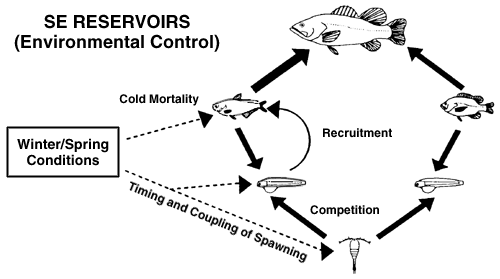


Global climate change affects the structure of aquatic predator
populations.

What are the potential ecological consequences of global climate change on the structure of aquatic predator populations?

Annual variations in climatic conditions can regulate the abundance and size structure of top predator populations by directly affecting the primary forage of the predator.
If winters should become less severe as a result of global warming, the growing season for many aquatic species will be extended; some species could extend their northern range, which would result in interferences within established food webs.
Predicted extremes in temperature fluctuations could result in range expansions of cold-sensitive species in warmer years followed by their drastic decline in colder years.

Adams, S. M., and D. L. DeAngelis. 1987. Indirect effects of early bass-shad interactions on predator population structure and food web dynamics. pp. 103-17. In W. C. Kerfoot and A. Sih (eds). Predation in Aquatic Communities. University Press of New England. Hanover, N.H.
Integrated Assessment Briefs. 1995. ORNL/M-4227. Oak Ridge National Laboratory, Oak Ridge, TN.